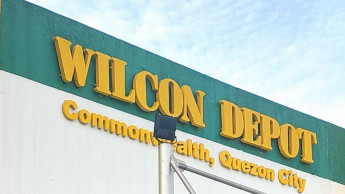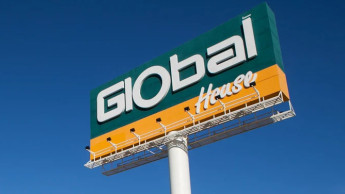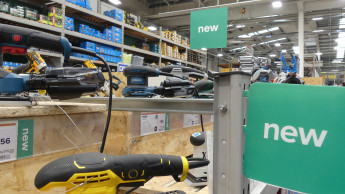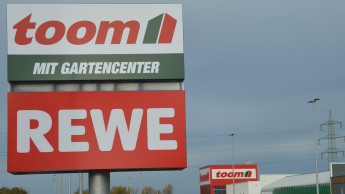Are you content just to be profitable, or would you like to improve your performance and profitability?
The accompanying spreadsheet provides an opportunity for readers to compare themselves against some of the largest publicly-owned firms in the United States and the world, as well as the performance of better-than-average smaller retailers compiled by the North American Retail Hardware Association (NRHA), whose annual Cost-of-Doing-Business survey provides average as well as high-profit industry averages for hardware stores, home centres and lumberyards. The data on the spreadsheet are for high-profit retailers.
(NRHA data in the accompanying spreadsheet are for 2004 sales; data for publicly-owned chains are based on 2005 sales. Another difference in the data is that net profit and return-on-assets (ROA) for the NRHA groups are before taxes. For the public companies, data are shown after taxes.)
Space is provided for readers to insert their own figures on the spreadsheet to see how they compare.
While he has been criticized for how poorly he handled the company’s recent annual meeting, CEO Bob Nardelli is racking up some very impressive numbers for Home Depot. Its net profit at 7.2 per cent is the highest of any listed chain, as is return-on-assets at 13 per cent. In fact, Depot’s percentage earnings are remarkably high for any retailer.
Its major home centre competitor, Lowe’s, is today’s stock market darling, with a price-earnings ratio much higher than that of Depot, but it lags behind Depot’s performance by most yardsticks, despite performing very well. Its net profit at 6.4 per cent is considerably higher than that of any of the other public chains and its return-on-assets is an impressive 11 per cent.
Depot and Lowe’s are generating high volume per retail outlet, both averaging over US $ 35 mio per store. Lowe’s does generate a somewhat higher average sale than Depot and enjoy a slightly higher average gross margin, but lags behind in sales per m² and sales per employee, as well as GRMROI (gross margin return on inventory). Depot’s stores now average about 10 500 m² in size, whereas Lowe’s are about 11 300 m².
Both chains are consistently increasing gross margins, with Lowe’s now exceeding 34 per cent and Depot approaching that number. When Depot first began, its margins were much lower.
It is interesting to see how different types of retailers mark up their products and manipulate other controllable factors. Wal-Mart, for example, as the world’s largest retailer, generates a most impressive US $ 4 833 in sales per m² and more than US $ 50 mio per retail unit, which includes the smaller international stores, smaller discount units and its Neighborhood Market food stores. Taken on their own, its super centres would have a much higher sales-per-unit result, probably near or above US $100 mio per unit.
Fulfilling its promise to offer “always low prices”, its gross margin is well below that of its number one competitor, Target - 23.1 per cent compared to 31.9 per cent. Part of the difference is probably attributable to its greater presence in food. Target, in its current annual report, said it is adding more food to its regular discount stores “as a customer convenience” and also plans to open more Super Targets, which stock food and are comparable to Wal-Mart super centres
Dollar General is a smaller discounter catering more to low-income families. Its stores are much smaller - 800 - 1 000 m² - and serve as “convenience outlets”, often occupying second-use locations. Price-points are generally under US $ 10. Average sales per store are just over US $ 1 mio and sales per m² are well below those of Wal-Mart and Target, as are sales per employee, but its return on assets is the highest. Its gross margin of 28.7 per cent keeps prices low for its lower-income consumers.
America’s two drug chains were included because their stores are smaller (up to 1 500 m²) and because they have so many units today selling many of the same items as hardware stores. Overall, they operate with lower margins, but this is due to the percentage of prescription sales compared to front-end merchandise. However, with their concentration on high-priced, high-turnover drugs, they lead in GMROI and perform well in ROA.
Their so-called front-end merchandise includes limited assortments of hand tools, hardware, housewares, decorating products, electrical items and even some plumbing items. They also feature seasonal categories such as lawn care products, outdoor living and Christmas decorations. These two chains, now with more than 1 000 units, have become serious “convenience” challenges to local hardware stores.
GMROI is perhaps the most important and easiest measurement of one’s retailing or wholesaling skills. To determine it, a retailer or wholesaler simply divides inventory into sales, then multiplies that ratio by his gross margin. A high GMROI can be achieved with high stockturns and low margins (like the drug chains or Wal-Mart) or by a low sales-to-inventory ratio but a higher gross margin, like the high-profit home centres.
The problem with independent hardware stores in the U.S., even the high-profit ones, is that they are simply not turning their inventories fast enough, even though they are enjoying a very substantial gross margin. Last year, hardware stores had a stockturn of only 1.9 times, whereas NRHA’s high-profit home centres averaged 3.8 times. It has always been so with U.S. hardware stores.
The low average sale for hardware stores indicates their role is that of a “convenience” outlet, not generally as a destination store for consumers. On the professional side, the high average for lumberyards reflects their contractor/builder sales.
What can one learn from this spreadsheet? That one should try to have the equivalent of US $ 200 000 in sales per employee; a GMROI of 175 or more, and ROA of 10 per cent or more. Hardware store sales per m² should be US $ 2 250; home centres, US $ 3 250. And one should strive for as high a gross margin as competition will allow.

 Menü
Menü
















